Search Images
Browse Content (p. 746)
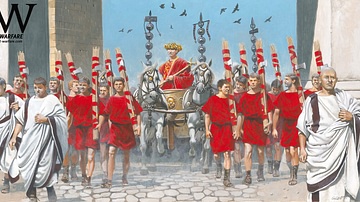
Image
Augustan Roman Triumph
An Augustan era Roman triumph, celebrating a military victory. Illustration by Zvonimir Grbasic.

Image
Athenian Women Attack a Messenger
Athenian women attacking the messenger who brings news that their husbands' died in battle. Illustration by Marek Szyszko.
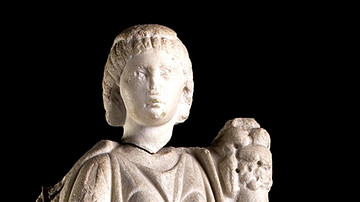
Image
Marble Statuette of Bona Dea
A marble statuette of Bona Dea, the Roman goddess of chastity, fertility and healing.
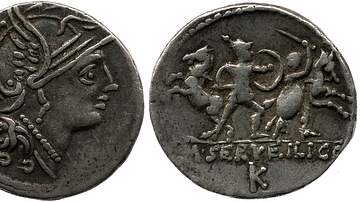
Image
Coin of Roma or Bellona
Silver denarius minted by M Servilius depicting the goddess Roma or Bellona on the obverse. On the reverse are two soldiers, with their horses in the background. c. 100 BCE. Rome. (British Museum)
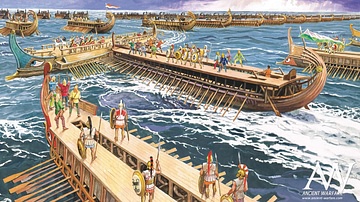
Image
Battle of Arginusae
An illustration of the Battle of Arginusae (406 BCE), during the Peloponnesian War. Illustration by Marek Szyszko.
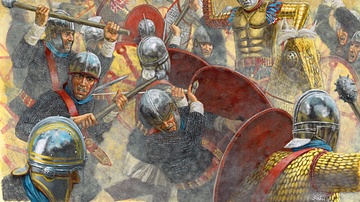
Image
Battle of Turin, 312 CE
An illustration of the Battle of Turin (312 CE) fought between the forces of Constantine I (r. 306-337 CE) and Maxentius (r. 306-312). Illustration by Sean Ó’Brógáín.
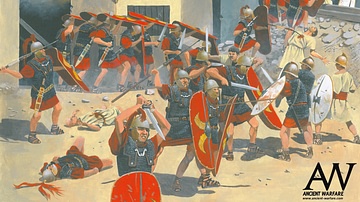
Image
Siege of Alexandria, 47 BCE
The forces of Julius Caesar (100 BCE-48 BCE) battle a faction of the Egyptian army during the Siege of Alexandria in 47 BCE, part of a struggle over the Egyptian line of succession. Illustration by by Zvonimir Grbasic.

Image
Pyrrhus of Epirus Unhorsed at the Battle of Heraclea
An illustration of Pyrrhus of Epirus' (c. 319 - 272 BCE) horse being killed at the Battle of Heraclea in 280 BCE. Illustration by Seán Ó Brógáin.
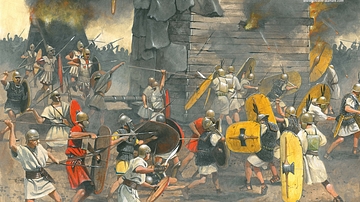
Image
Battle of Lilybaeum
An illustration of the Battle of Lilybaeum (Marsala) in 250 BCE, during the Punic Wars. Illustration by Zvonimir Grbasic.
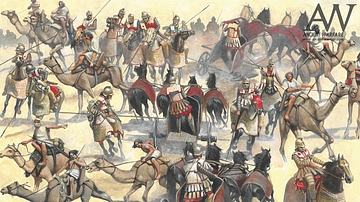
Image
Battle of Magnesia
An illustration of the Battle of Magnesia in 190 BCE, fought between the Seleucid Empire and the alliance between the Roman Republic and the kingdom of Pergamum. Illustration by Zvonimir Grbasic.